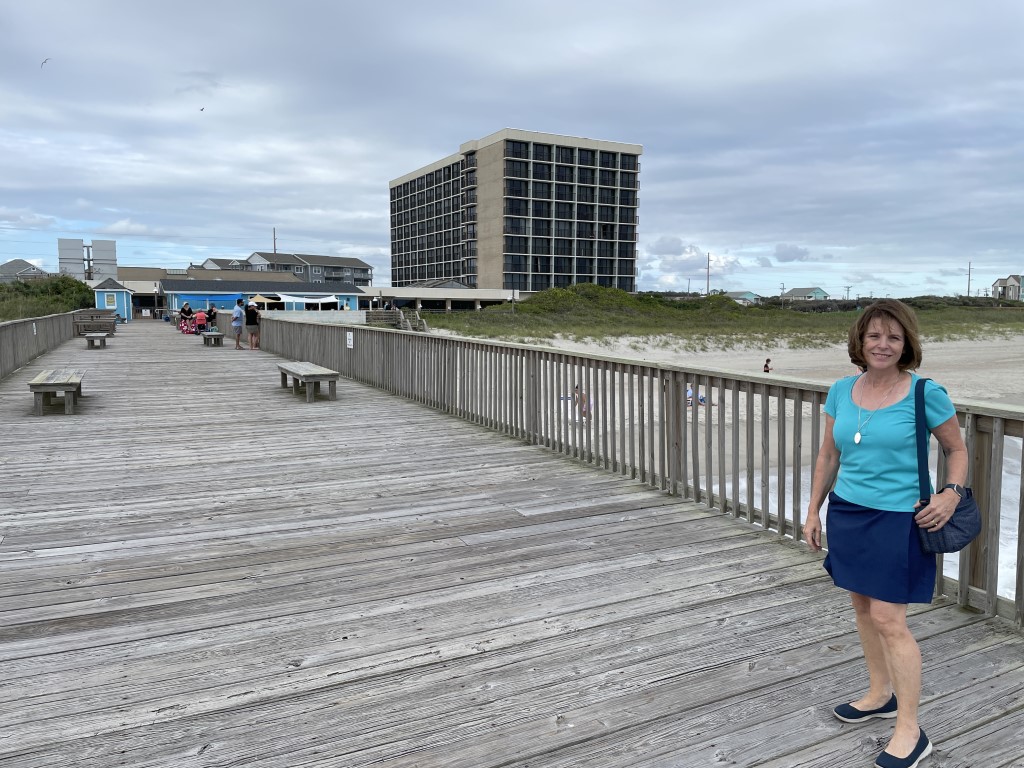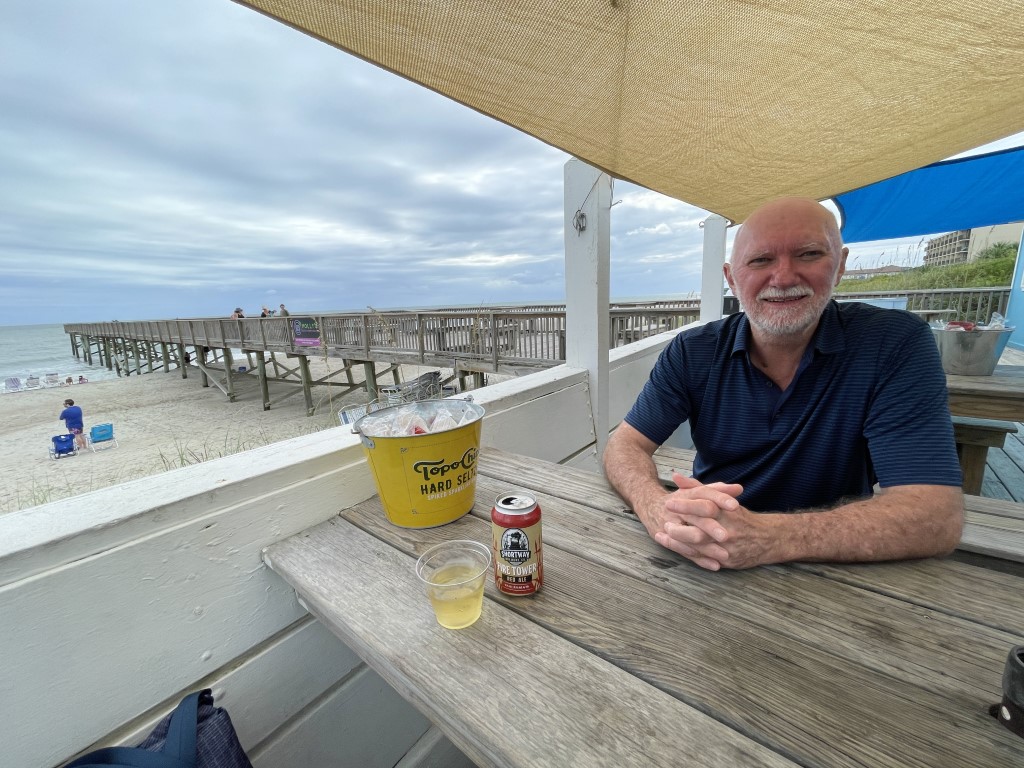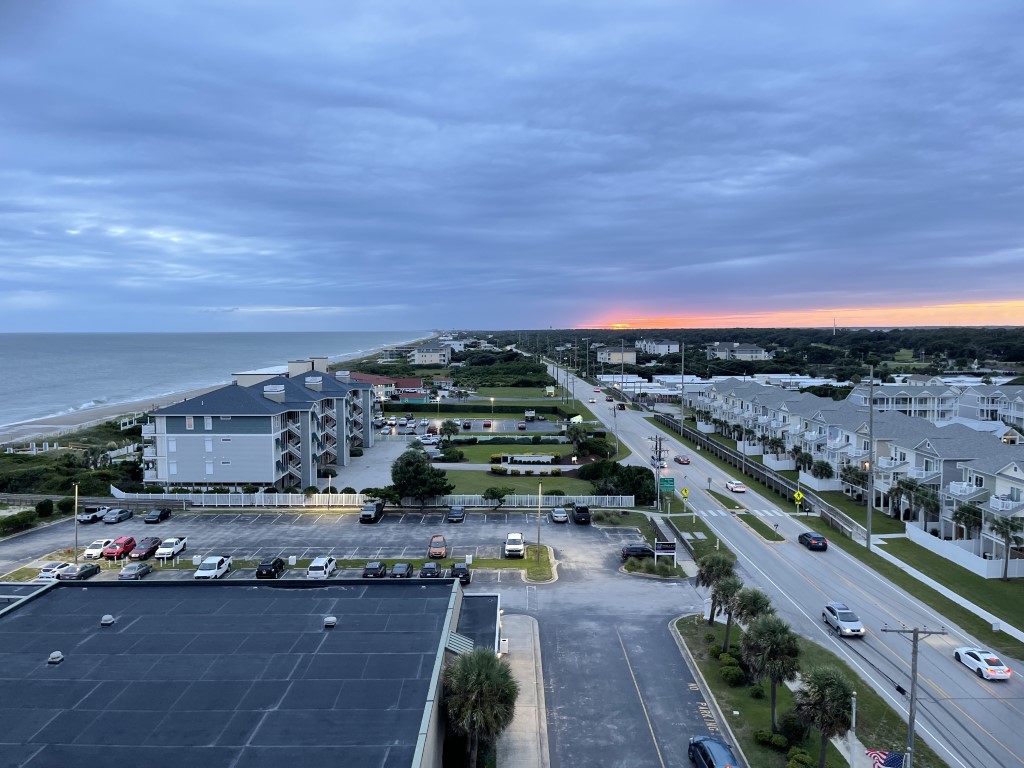From Williamsburg our next destination was the Outer Banks of North Carolina. ( North Carolina was the first “new” state for this trip, taking us up to our 43rd State of the Union!) The Outer Banks (frequently abbreviated OBX) are a 200 mile string of barrier islands and spits off the coast of North Carolina. History looms large here as it was the site of the first ( unsuccessful) English colony on Roanoke Island and also the location where Orville and Wilbur Wright flew the first powered plane flight. It’s also known as the Graveyard of the Atlantic as it’s treacherous coast has claimed hundreds of shipwrecks and it was a popular hunting ground for pirates in the 18th century – Blackbeard made his home here!
The treacherous waters led to a series of lighthouses being built along the shores, and the first one we stopped in to see was Currituck beach Lighthouse. This area of the banks is hugely popular as a vacation destination and we were amazed at the range of accommodation all along the coast. I just loved to tall clapboard homes and apartment buildings, painted in pastel shades with crisp white trims. They tower three stories high, most often built up on stilts so they can weather the storm surges of the urricanes and tropical storms that occur in the region.

Curritck beach Lighthouse – first of many!

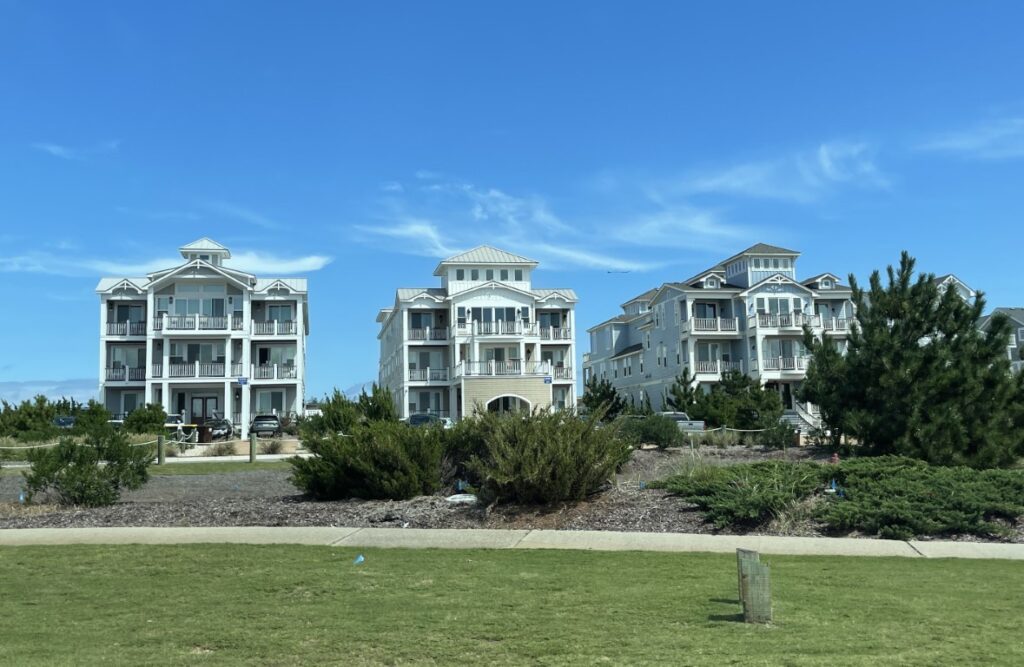
Our next stop was the Wright Brothers national Memorial, honoring the fathers of flight. There is a spectacular memorial which towers at the top of the hill where they undertook their first glider experiments, a life size bronze replica of the Wright Flyer, an excellent visitor center with an accurate replica and markers to show exactly where the first flights took place. The climb to the top of the hill was a bit hard but the view was spectacular.
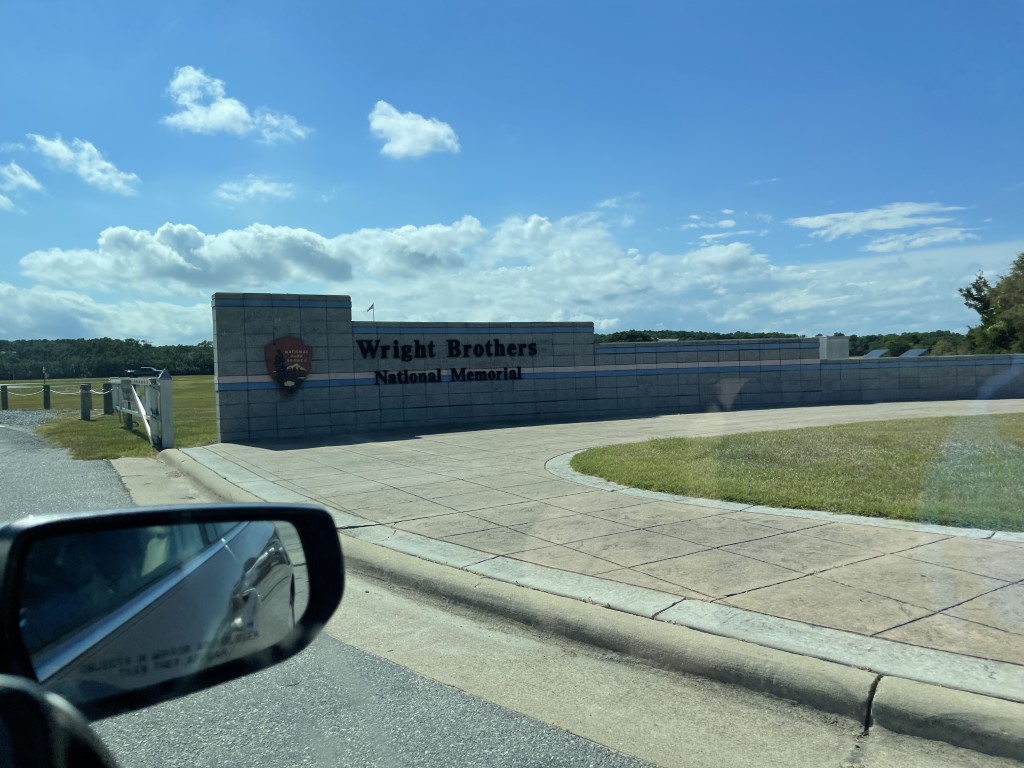
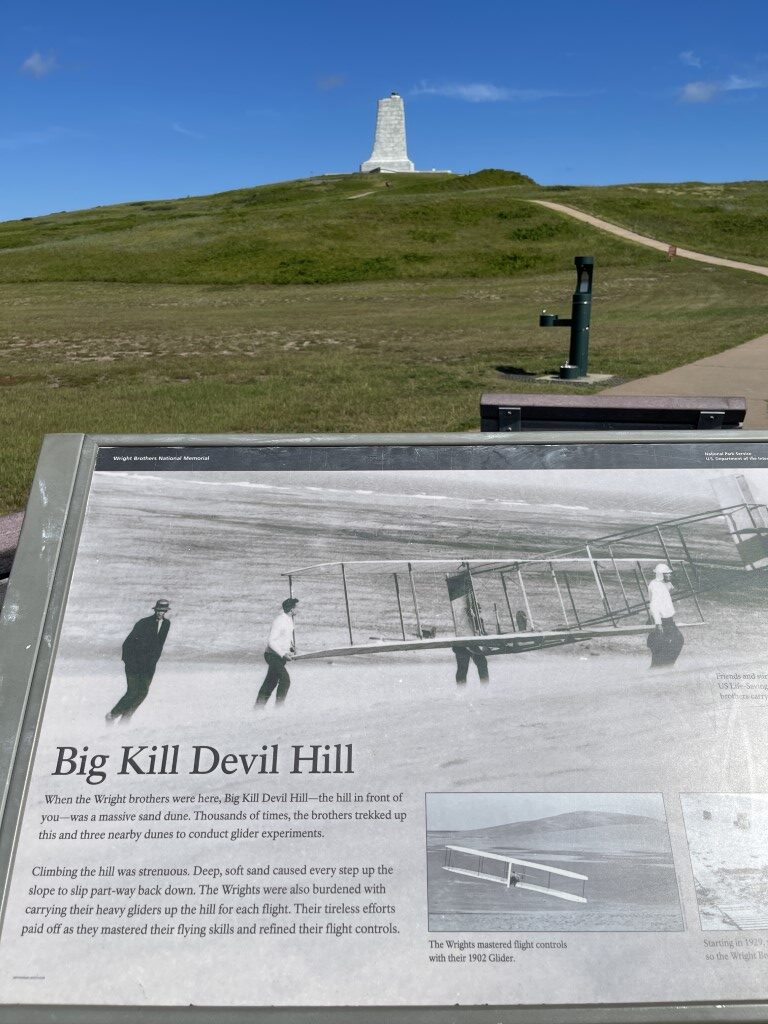
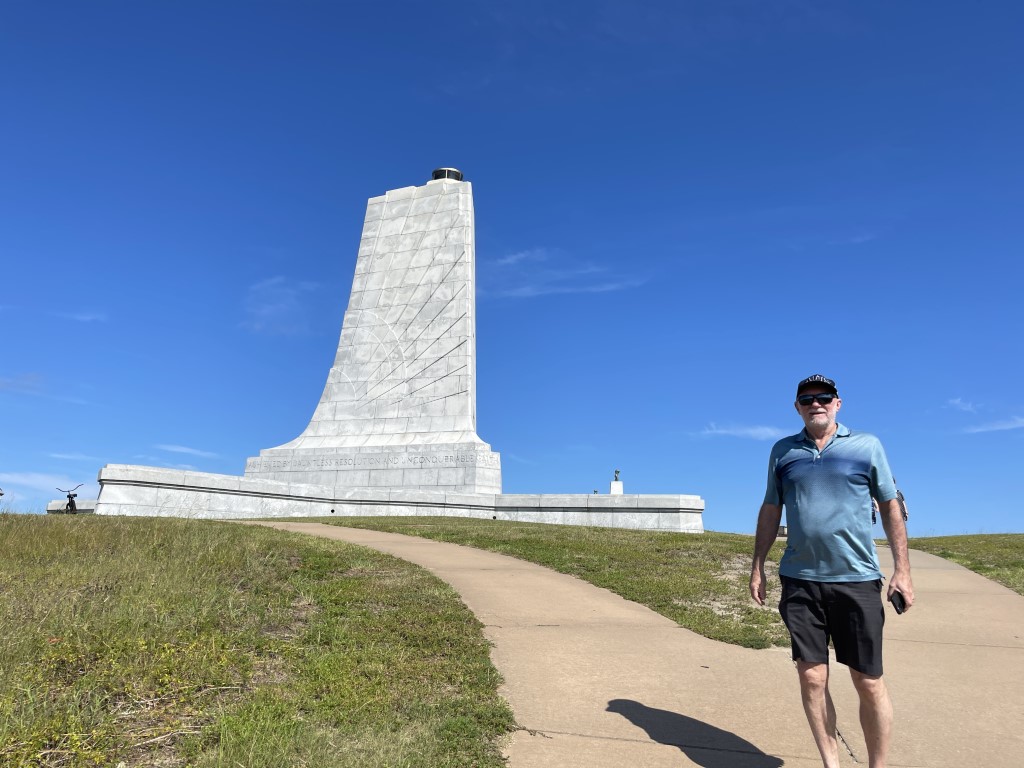
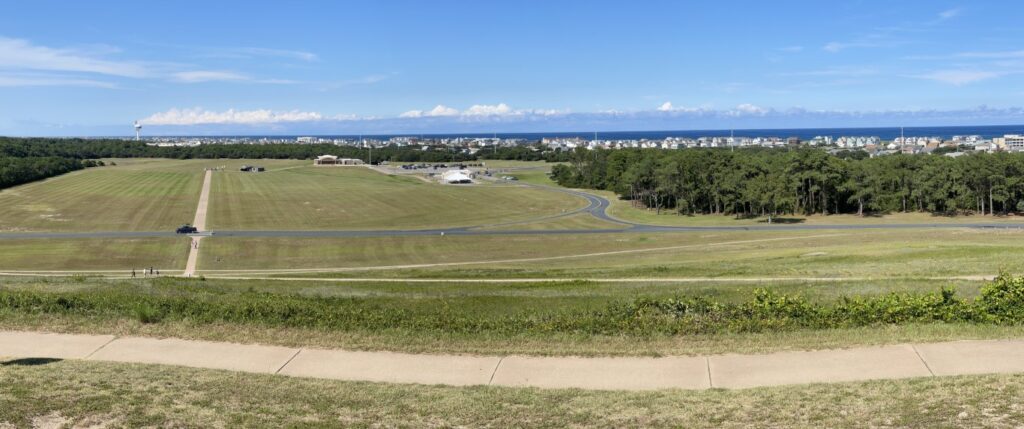
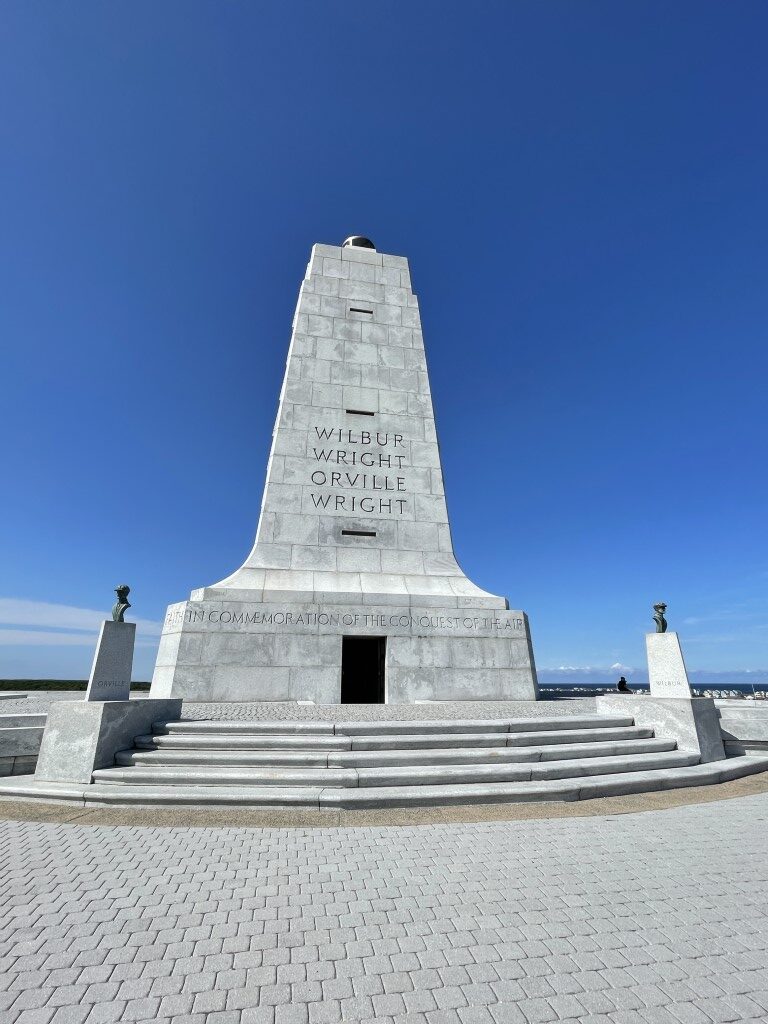




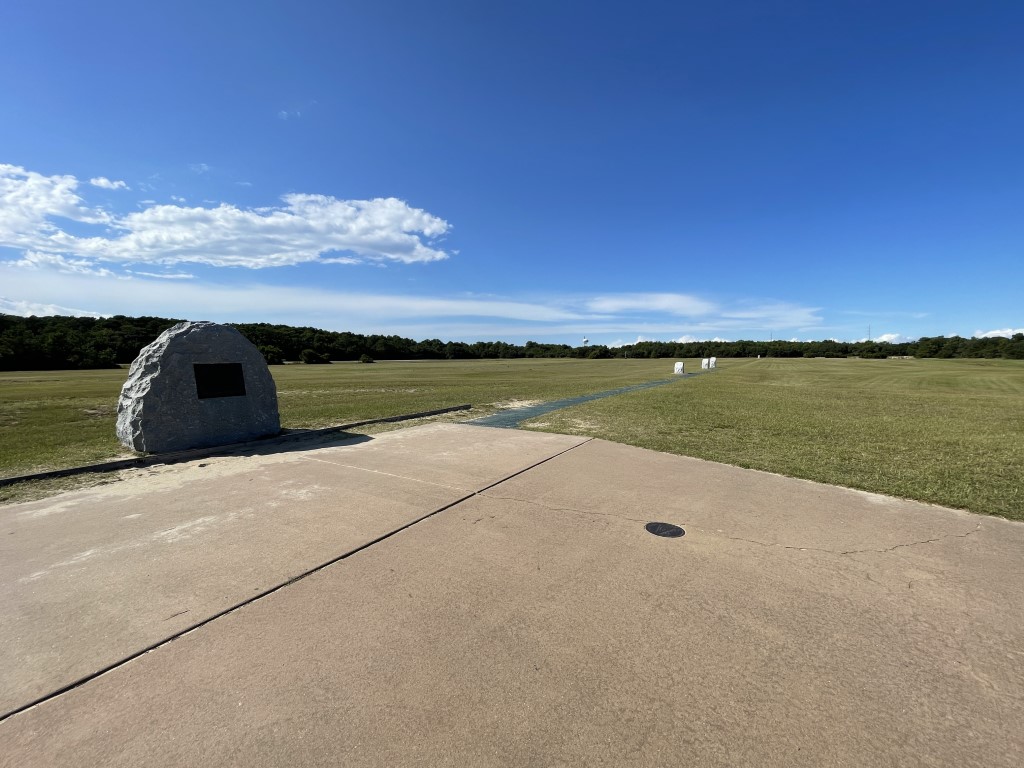
Accommodationfor the night was a “Dune View” room which meant we could see the ocean if we stood up, but not when we sat down on our verandah. That was fine, we had agreat meak at a nearby Brewpub and slept with the sound of the ocean. Next morning thr first stop was Fort Raleigh on Roanoke Island. In 1587, 117 English men, women and children came ashore on Roanoke Island to establish a permanent English settlement in the New World. Just three years later in 1590, when English ships returned to bring supplies, they found the island deserted with no sign of the colonists. After nearly 450 years, the mystery of what happened to the colonists remains unsolved. Investigations are still going on today to try to solve the mystery! We had an excellentt walking tour of the site with a volunteer ranger
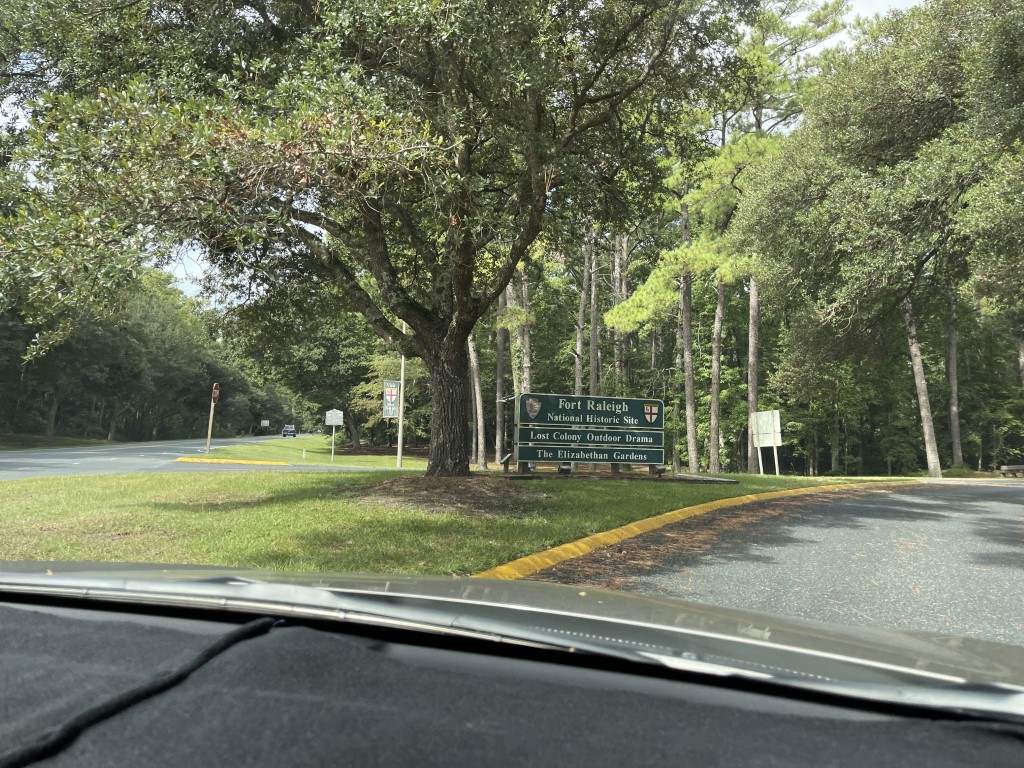

We stopped in to visit Jockey’s Ridge state park, site of the highest Sand dunes on the East coast of the USA
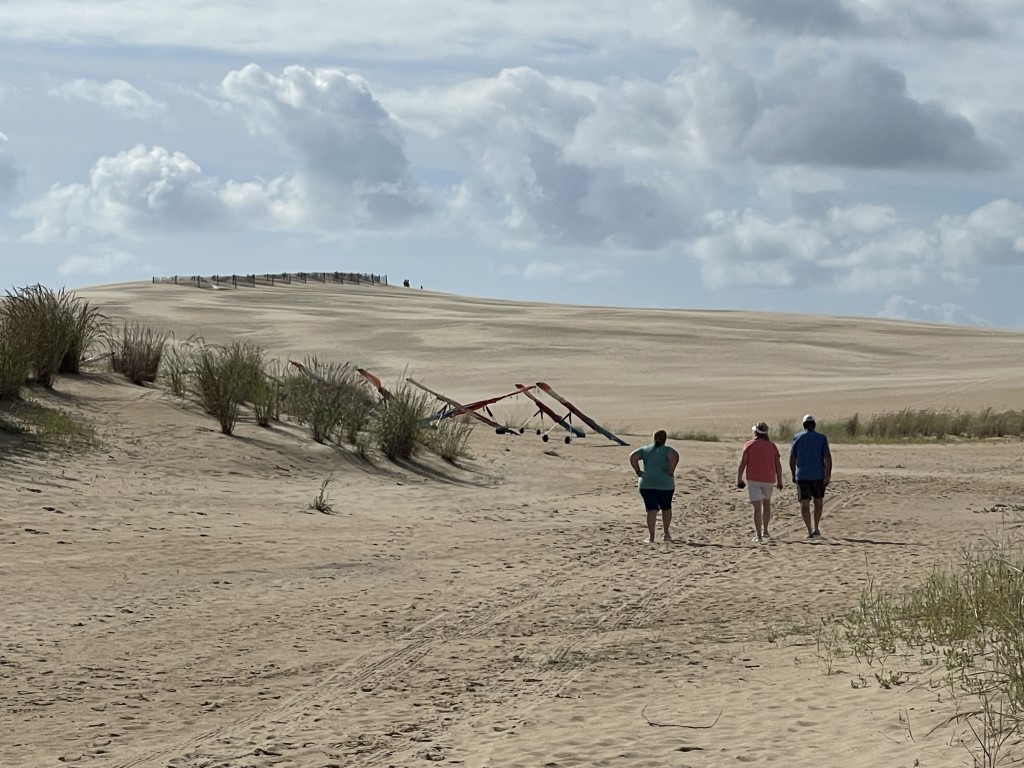
And then drove on south along the very sandy roads to see Cape Hatteras Lighthouse. We stopped to have a bite to eat on the sound side of the islands and marvelled at the extraordinary houses that tower above the sands.
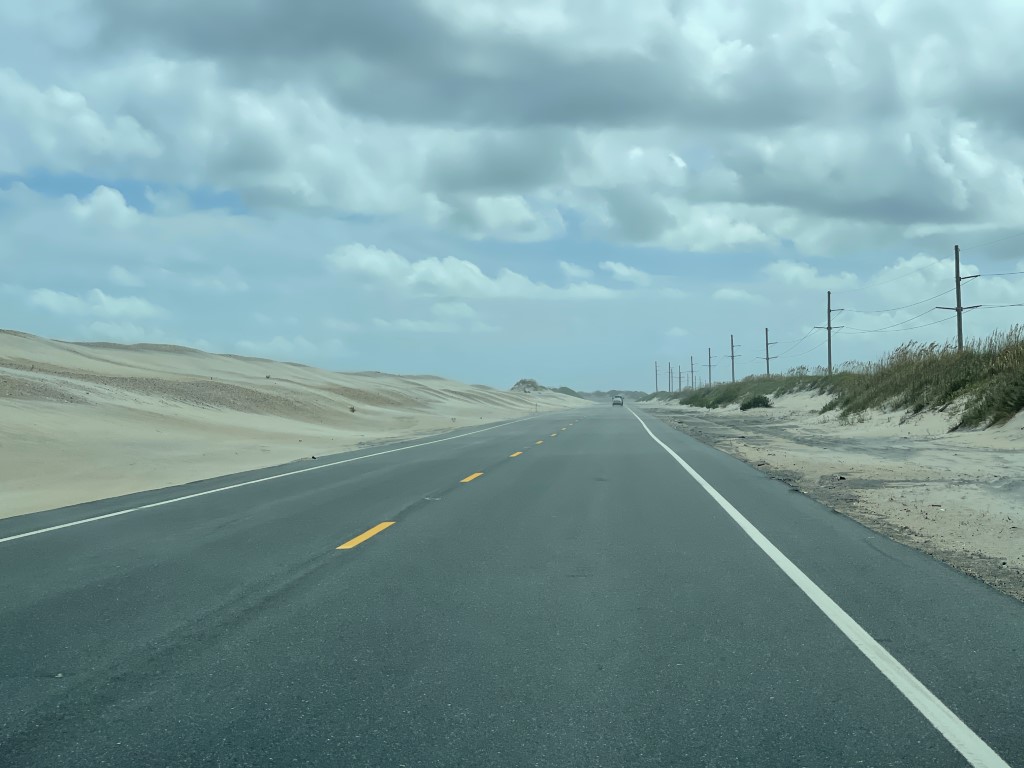


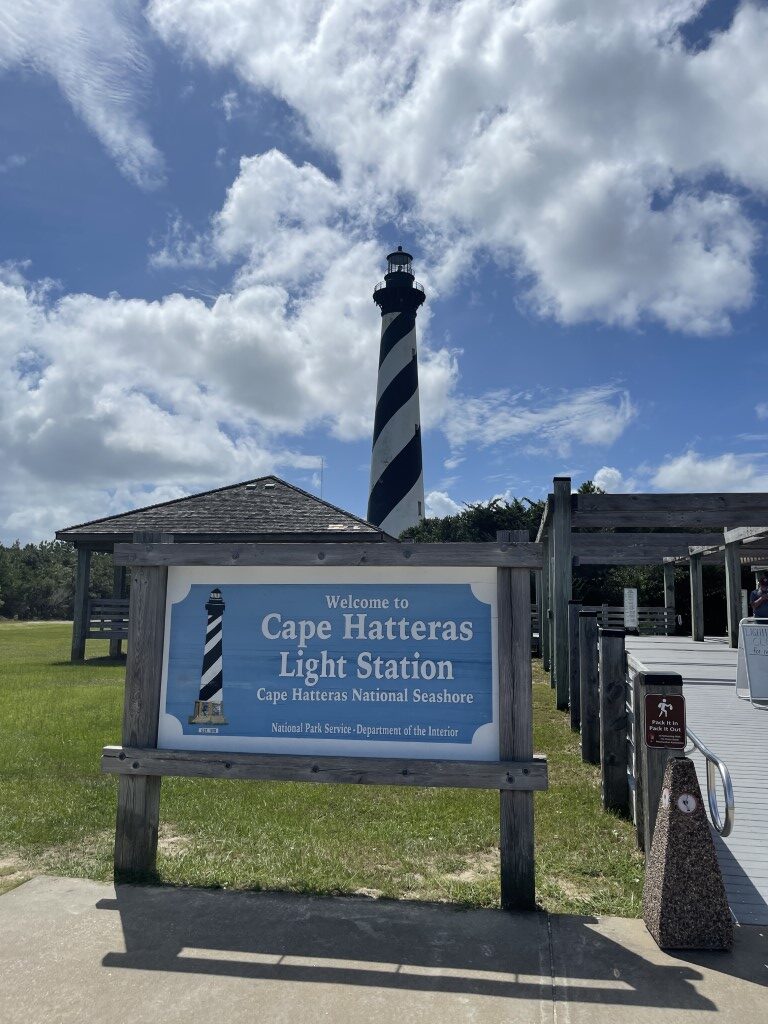
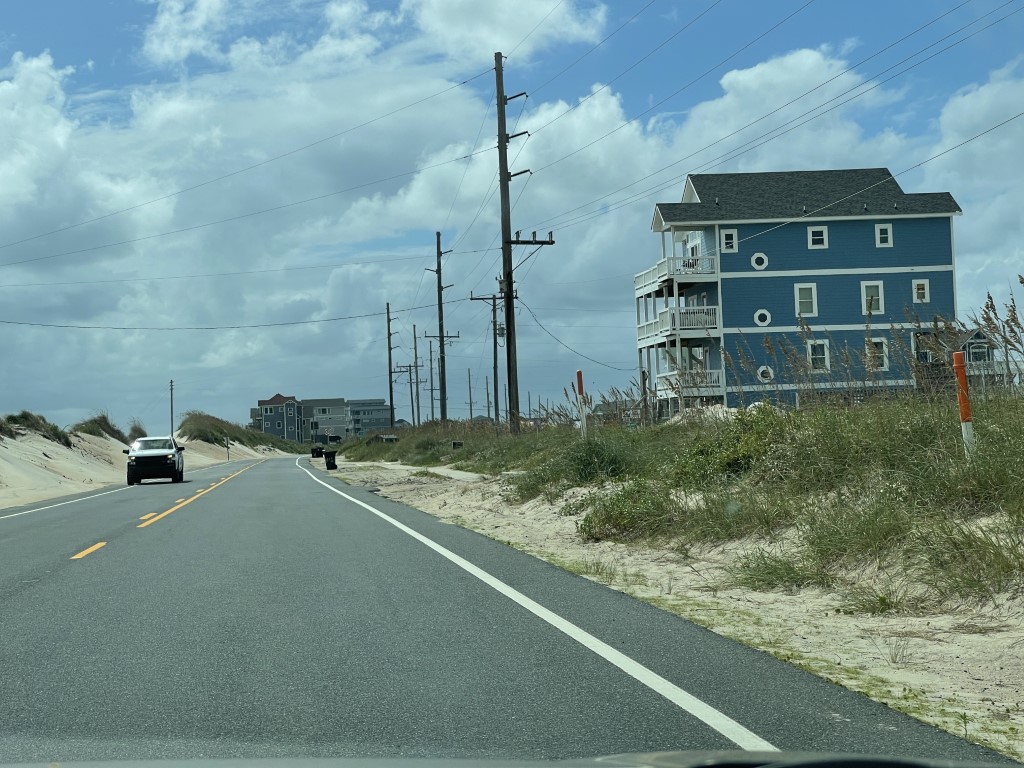
At the southern tip of the island we stopped in to viist the tiny Buxton British Sailor cemetery. In April 1942, a British tanker carrying airplane fuel off of Cape Hatteras took seven torpedoes from a lurking German U-boat. Nearly half of the crew drowned, and two of them later washed up on the beach. They were buried here, in a mini-cemetery fenced off from what had been a larger burial ground. Although both this boneyard and the one in Ocracoke are in North Carolina, they’re technically British territory.
Every year, on the Thursday and Friday closest to May 11th (the day that ship carrying the Ocracoke’s victims was sunk), a ceremony is held at both cemeteries, attended by representatives from Britain and, sometimes, Germany.
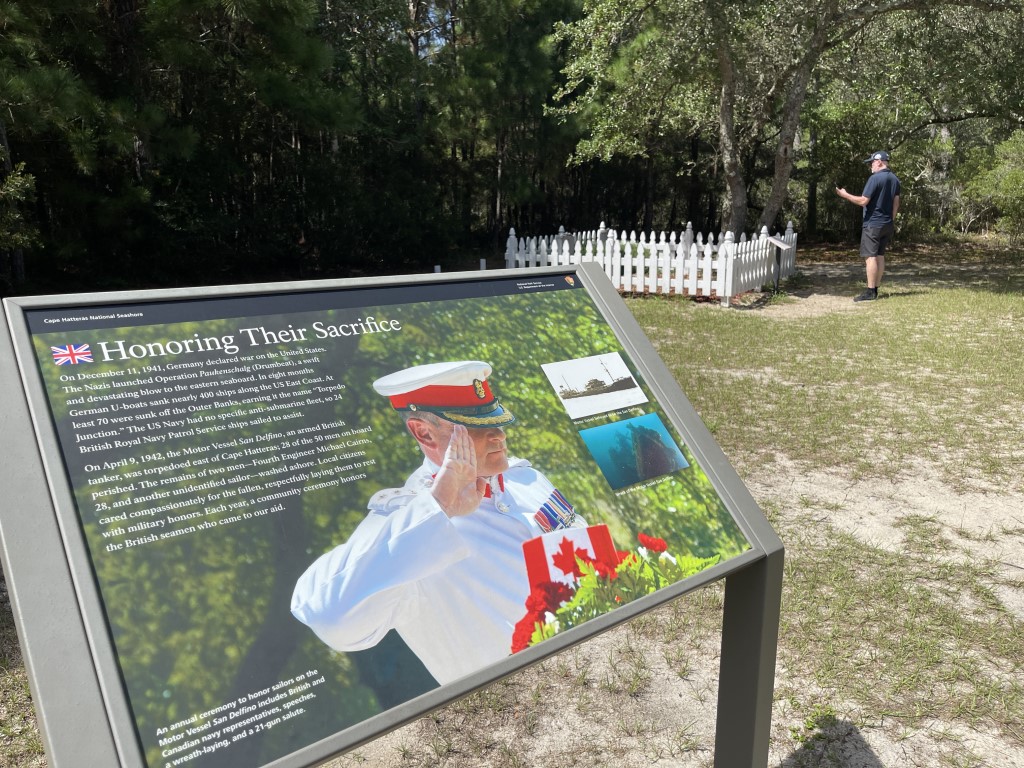
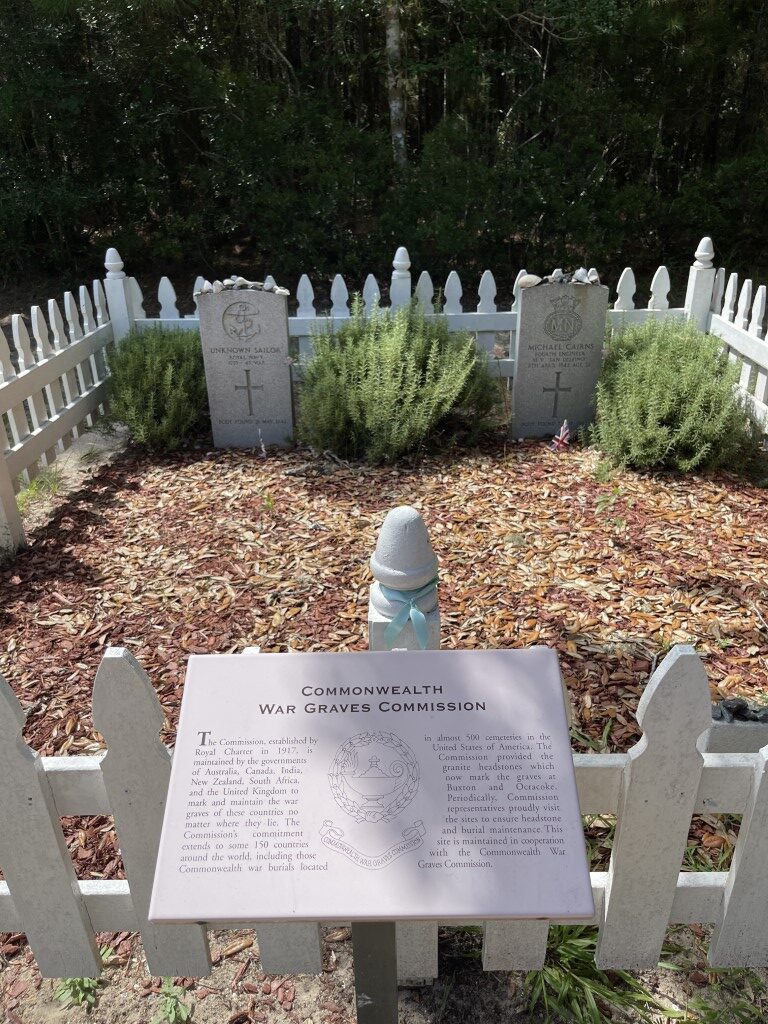
Before heading to our hotel for the night we stopped in at the Graveyard of the Atlantic Museum, which has exhibits about everything seafaring in the area, eg the pirates that roamed the shoreS as well as all the shipwrecks that plagued the area.
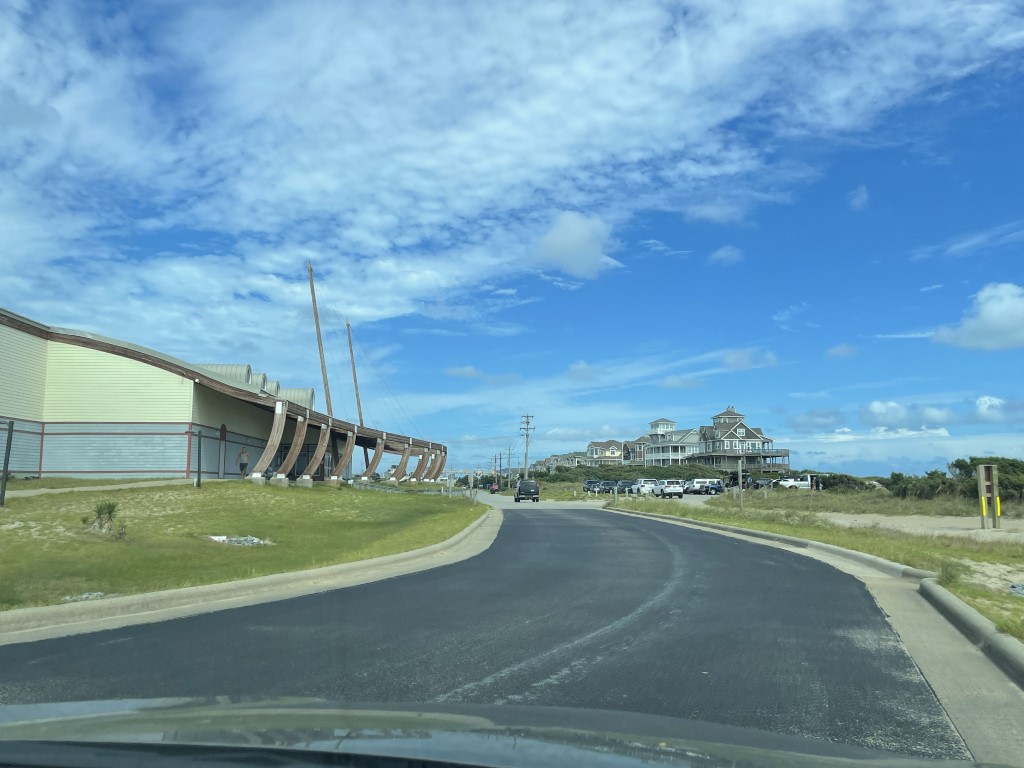
This night we stayed on the top floor of a towering timber beachside hotel. Fabulous views over the water, but a tought climb up to the top with our suitcases for Neil! The Moonrise view and breakfast on the deck view was worth it though.

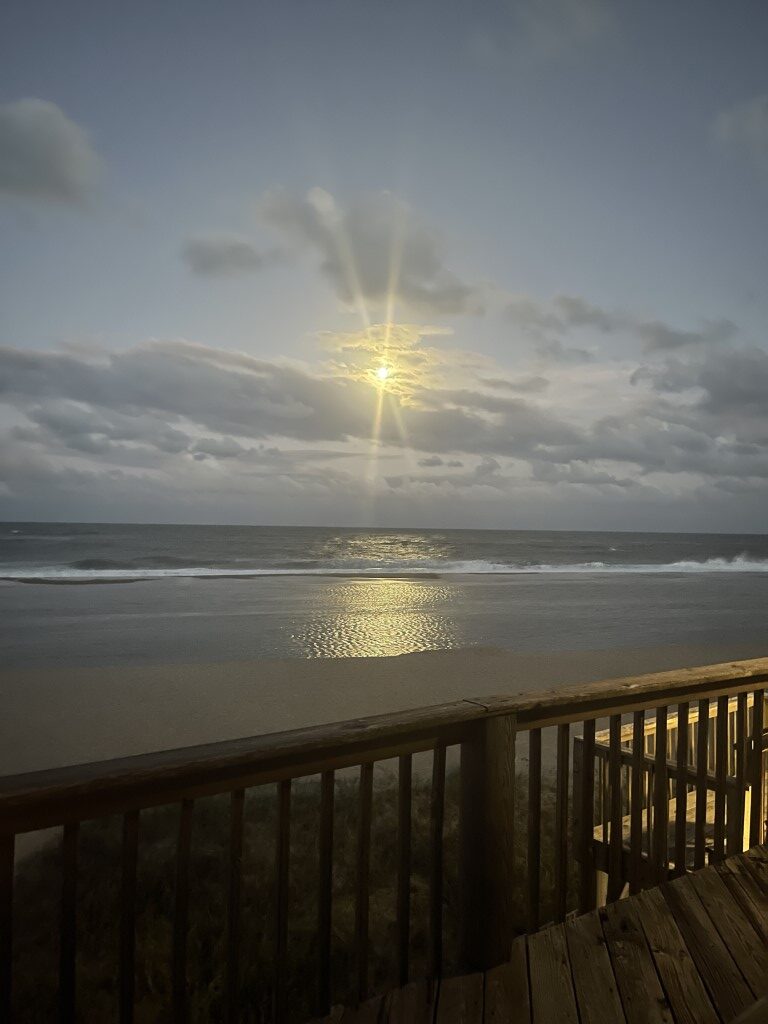

Our last day on the Outer banks was mainly spent on ferries! From the tip of Cape Hatteras we caught the free ferry o Ocracoke Island. Thois one runs every half hour bt can get visist so they recommend arriving early. We were on the 9 am ferry! Ocracoke is a long sandy strip with a small town at the southern end. The island used to have free roaming wild ponies but to protect them they are regularly corraled and kept in pony pens in the high season. Ocrcoke Island has another lighthouse and also another British cemetery. In May 11, 1942, the HMT Bedfordshire, was patrolling the coastline for German U-boats when it was struck by a torpedo. The ship went down, and all 37 sailors on board perished. Most of the bodies were never recovered, but four washed ashore near the small town of Ocracoke, North Carolina at the very southern tip of the Outer Banks. They re buried in the tiny cemetery.
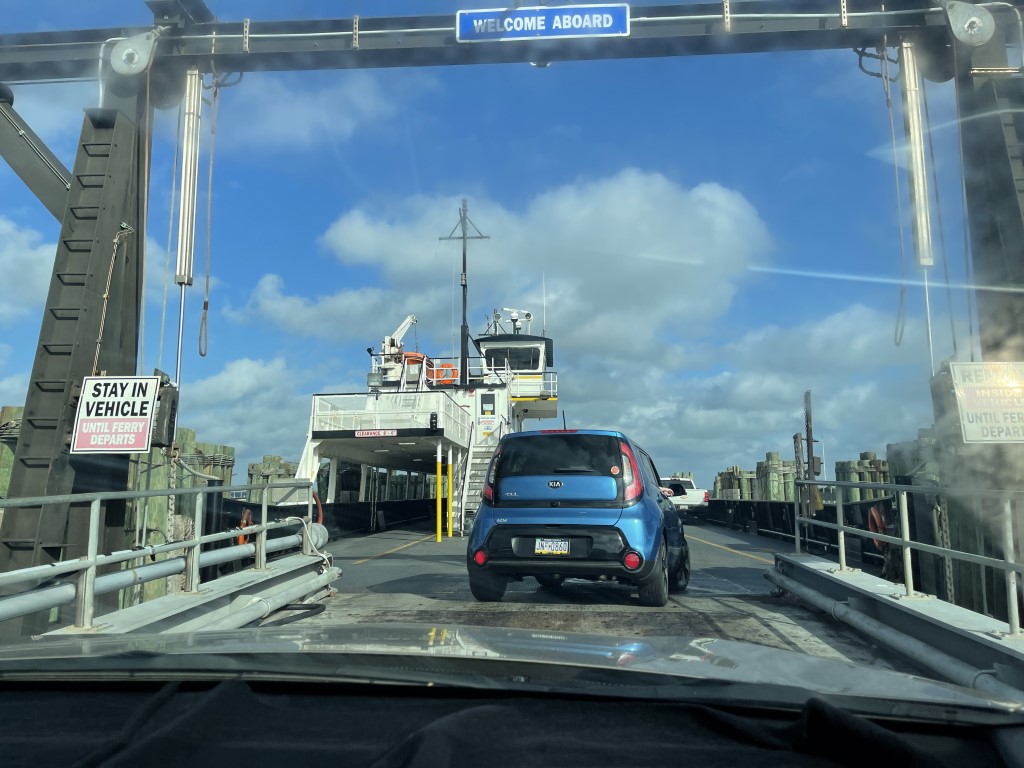
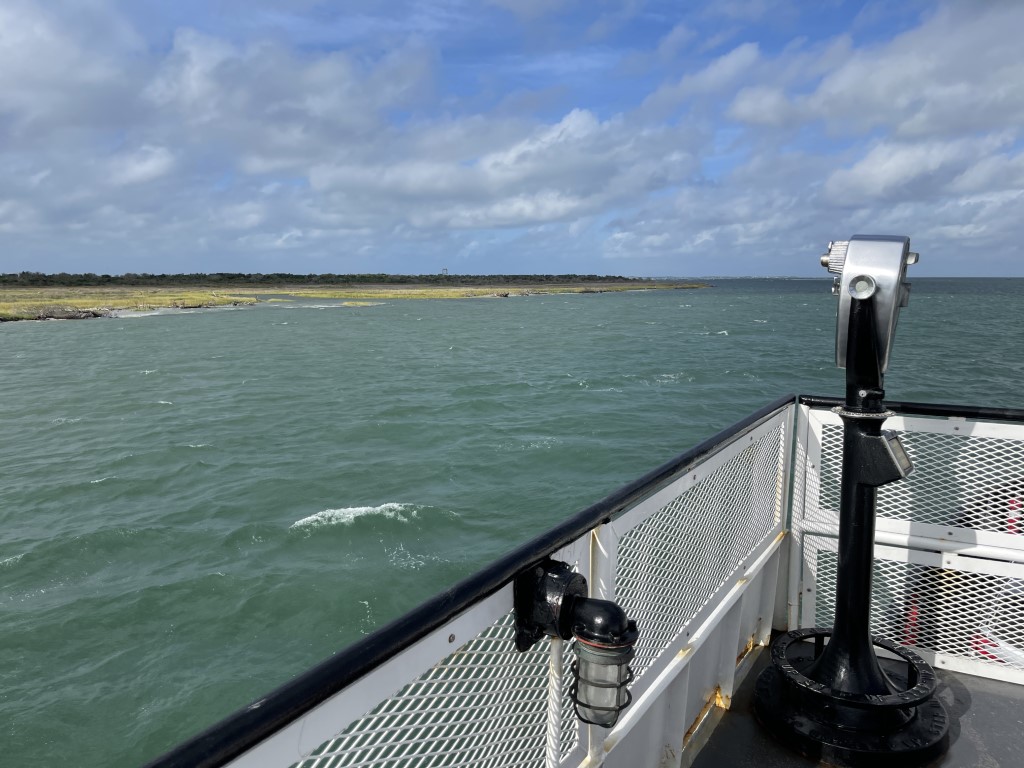



We were amused to see that golf carts are the transport of choice in the tiny community of Ocracoke. We had to wait here to catch our second ferry of the day which would take us further south the the mainland . We found a nice little restaarant at the marina for an early lunch before catching the ferry. The second frry trip was longer 2 1/2 hours.

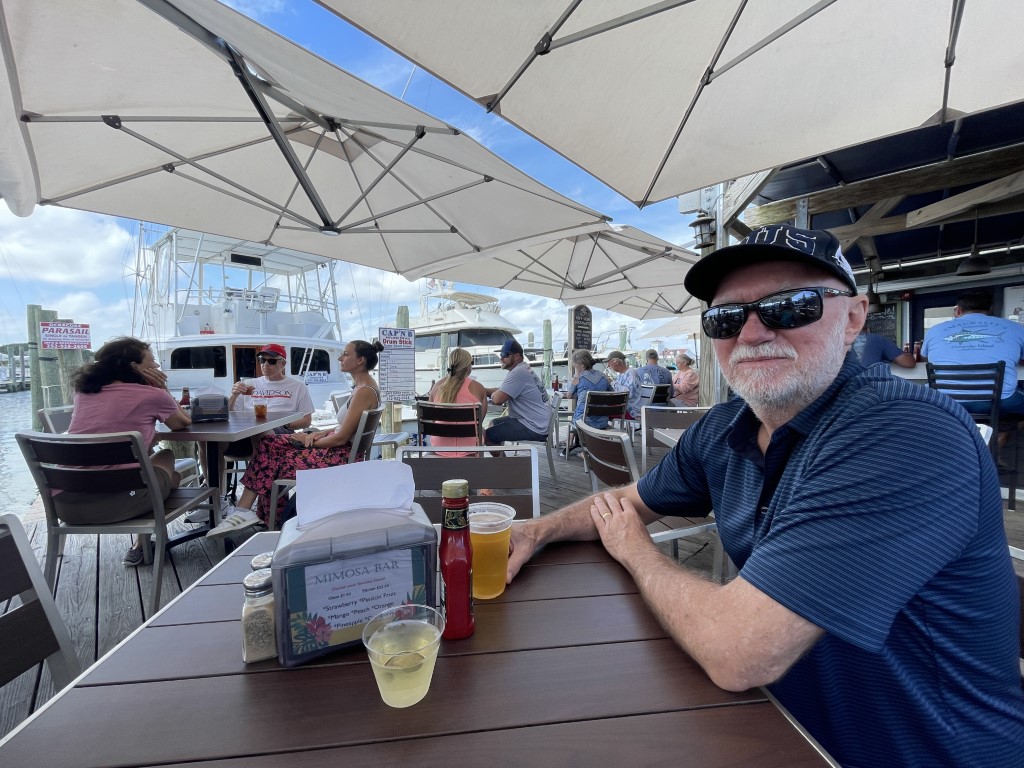
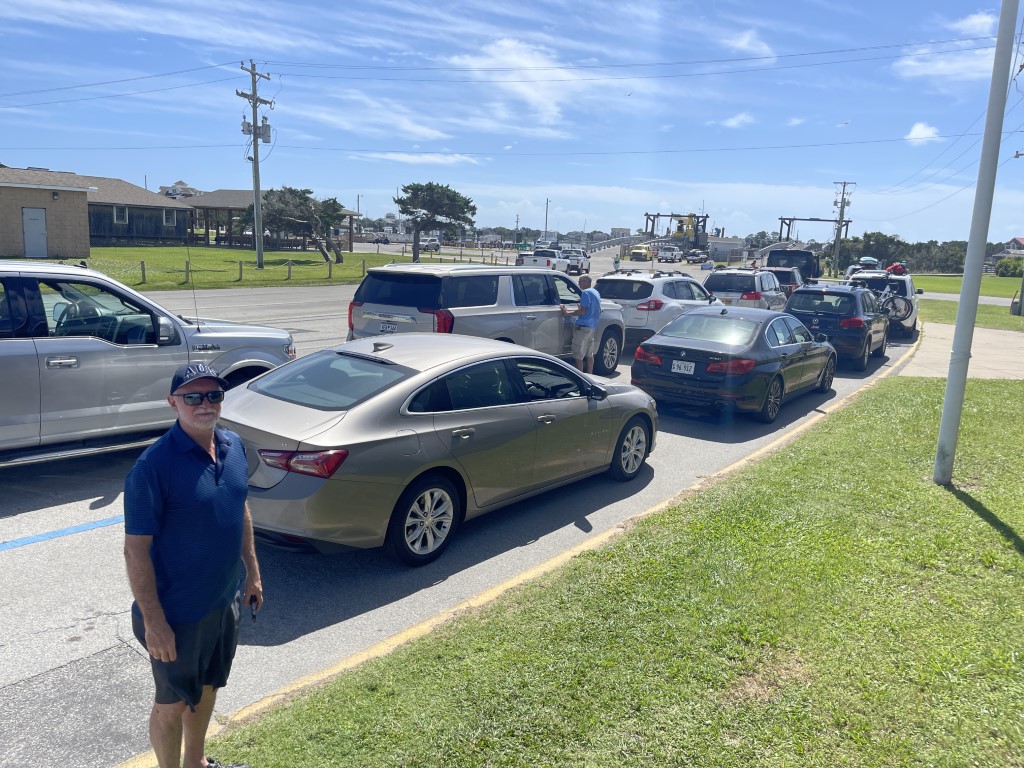

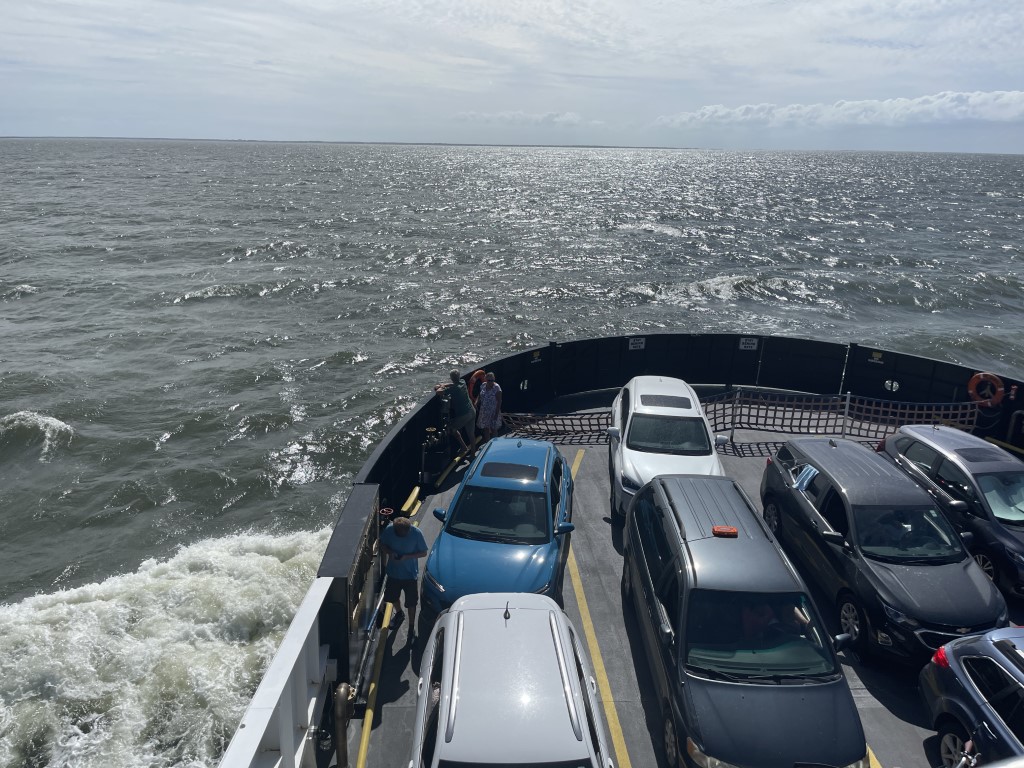
Tonight we are saying at Atlantic Beach, North Carolina. Another beachside location popular for vacations. We wandered out along the hotel pier and had atasy fish and chips dinner overlooking the beach. The Outer banks have been a wonderul new experience for us, unlike anywhere else we have seen in the entire country.
